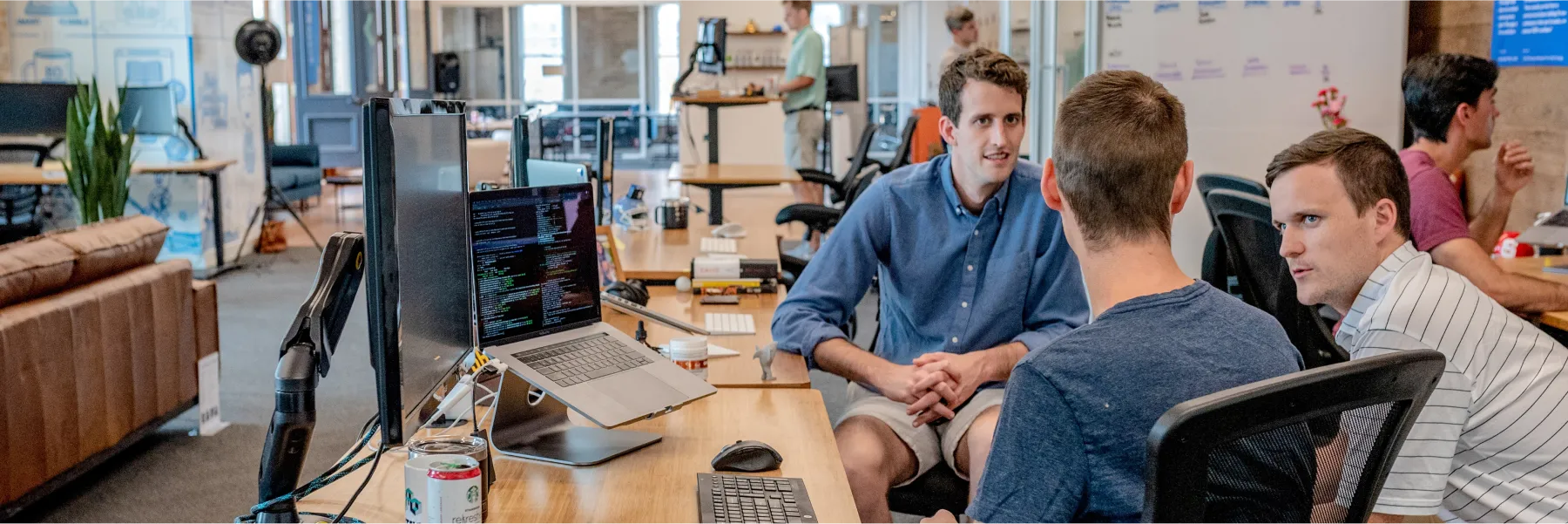Overcoming the 5 Common Challenges in Collaborative Workspaces
Published in
How To
•
Aug 6, 2023

Understanding Collaborative Workspaces
Summary: Collaborative workspaces are designed to enhance teamwork and communication. This guide explores their definition, importance, benefits, and strategies to overcome common challenges like communication breakdowns, lack of accountability, and task management issues.
Defining Collaborative Workspaces
Collaborative workspaces are environments—physical or digital—created to facilitate teamwork and communication. They include tools and resources that help team members work together effectively. By leveraging technology and fostering a culture of collaboration, these workspaces aim to improve productivity, efficiency, and overall team performance.
The Importance of Collaborative Workspaces
In today's fast-paced business world, effective collaboration is crucial. Collaborative workspaces enable team members to share ideas, learn from one another, and work towards common goals. By breaking down silos and encouraging open communication, they help teams stay aligned, make better decisions, and drive better results for the organization.
Benefits of Collaborative Workspaces
Increased Productivity: Teams work more efficiently and effectively.
Improved Communication: Open communication fosters better teamwork.
Enhanced Innovation: Encourages creativity and new ideas.
Attracting Talent: Provides an environment where employees feel supported and empowered.

Challenge 1: Communication Breakdown
Identifying Communication Issues
Communication breakdowns can result from unclear expectations, differing styles, or lack of tools. These issues lead to misunderstandings, decreased productivity, and potential conflicts.
Strategies to Improve Communication
Effective Communication Tools: Implement tools like shared inboxes and integrated CRMs to streamline workflows.
Establishing Communication Protocols: Set clear expectations for response times and guidelines for communication channels.
Challenge 2: Lack of Accountability
Recognizing the Signs of Lack of Accountability
Signs include missed deadlines, uncompleted tasks, and disorganization. A lack of accountability can decrease motivation and performance.
Ways to Foster Accountability
Creating Clear Roles and Responsibilities: Define expectations for tasks and ensure everyone understands their role.
Implementing Accountability Tools: Use tools like Kanban boards to visualize workflows and monitor progress.
Challenge 3: Difficulty in Managing Tasks
Understanding Task Management Issues
Task management can be challenging in a busy workspace, leading to disorganization and difficulty in prioritizing and delegating tasks.
Solutions for Better Task Management
Utilizing Task Management Software: Centralize task management to keep track of responsibilities and deadlines.
Adopting Agile Methodologies: Use frameworks like Scrum or Kanban for flexibility and continuous improvement.
Conclusion
Collaborative workspaces are essential for fostering communication, accountability, and effective task management. By addressing common challenges and implementing strategies like clear communication tools, defined roles, and agile methodologies, teams can enhance their performance and achieve better results. Embracing collaborative workspaces not only boosts productivity but also creates a supportive environment where employees can thrive.
Peter Jacobs
I never set out to be in sales—I’m a designer at heart. But when you build something from the ground up, like RogerRoger, you quickly learn that sales isn’t just a department; it’s part of every conversation, decision, and strategy.
My sales journey didn’t come from books or formal education. Instead, I dove headfirst into the world of selling by doing—running trial and error, getting feedback (sometimes hearing NO from a big prospect), and absorbing lessons from seasoned salespeople.
My letters are all about making sales feel a little more fun and human.





